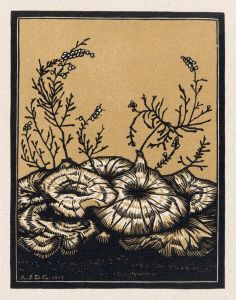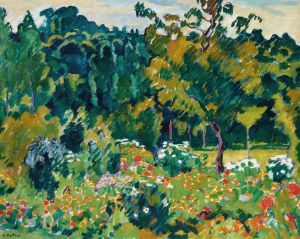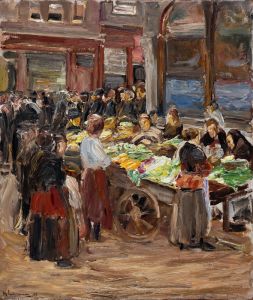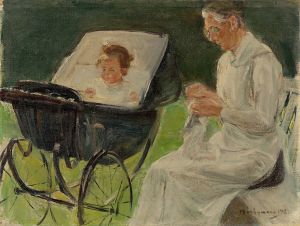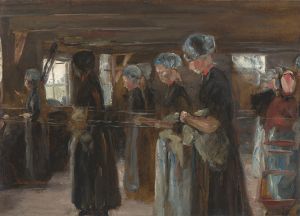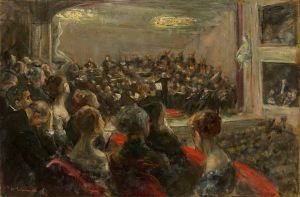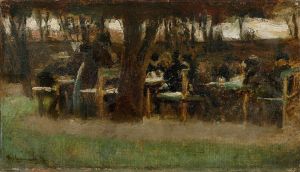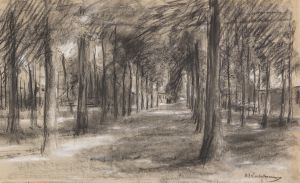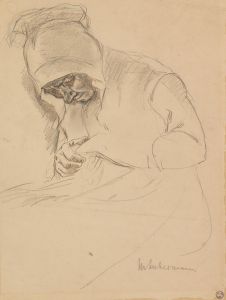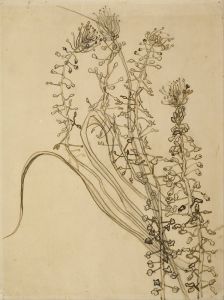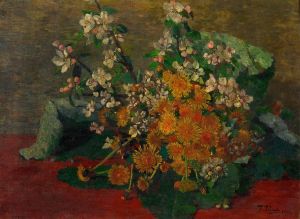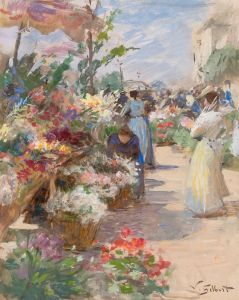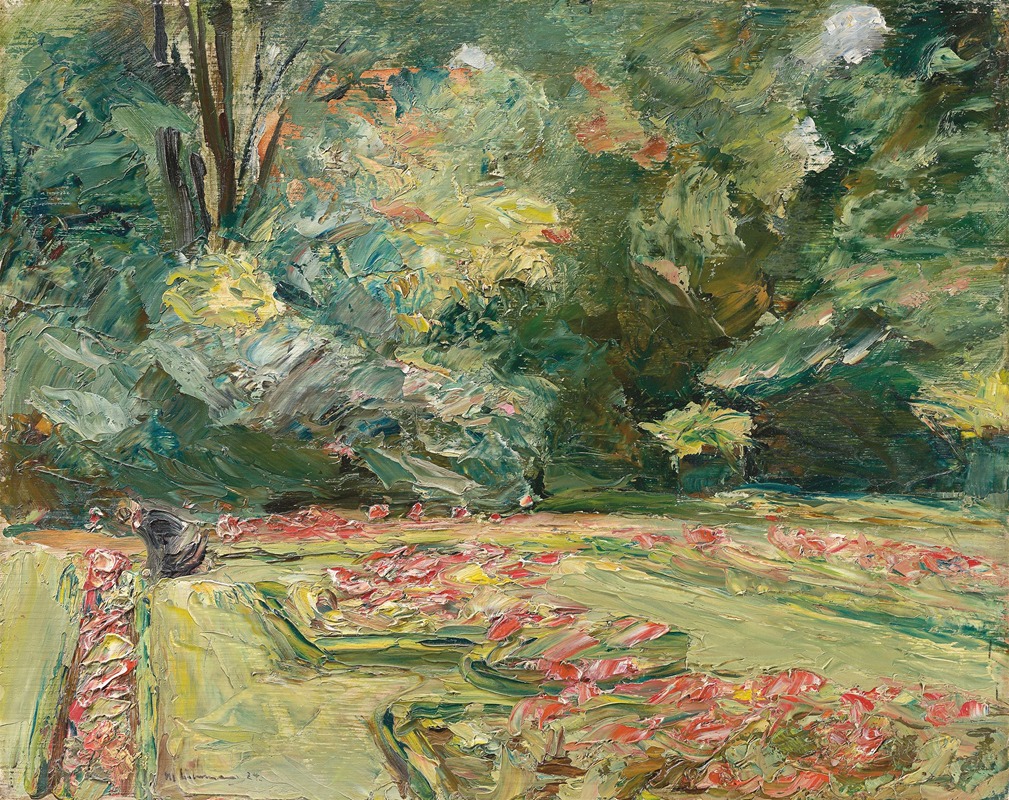
Die Blumenterrasse im Wannseegarten nach Norden
A hand-painted replica of Max Liebermann’s masterpiece Die Blumenterrasse im Wannseegarten nach Norden, meticulously crafted by professional artists to capture the true essence of the original. Each piece is created with museum-quality canvas and rare mineral pigments, carefully painted by experienced artists with delicate brushstrokes and rich, layered colors to perfectly recreate the texture of the original artwork. Unlike machine-printed reproductions, this hand-painted version brings the painting to life, infused with the artist’s emotions and skill in every stroke. Whether for personal collection or home decoration, it instantly elevates the artistic atmosphere of any space.
Max Liebermann's painting Die Blumenterrasse im Wannseegarten nach Norden (The Flower Terrace in the Wannsee Garden Facing North) is a notable work by the German Impressionist painter. Created in 1915, the painting depicts a view of the artist's private garden at his summer residence on the shores of Lake Wannsee, near Berlin. Liebermann, one of the leading figures of German Impressionism, frequently drew inspiration from his surroundings, and his garden became a recurring subject in his later works.
The painting showcases Liebermann's mastery in capturing light, color, and atmosphere. It portrays a meticulously arranged flower terrace, with vibrant blooms and lush greenery, leading the viewer's eye toward the calm waters of Lake Wannsee in the background. The composition is characterized by its balance and harmony, with the garden's structured layout contrasting with the natural beauty of the lake and sky. Liebermann's loose brushwork and use of light create a sense of movement and vitality, typical of Impressionist techniques.
Liebermann purchased the Wannsee property in 1909 and personally oversaw the design of its garden, which was influenced by Dutch and English garden styles. The garden became a central theme in his art, reflecting his deep appreciation for nature and his interest in the interplay between human cultivation and the natural world. The Wannsee garden paintings, including Die Blumenterrasse im Wannseegarten nach Norden, are considered some of Liebermann's most celebrated works, showcasing his ability to merge personal experience with artistic expression.
During Liebermann's lifetime, his work was widely recognized, and he served as the president of the Prussian Academy of Arts from 1920 to 1932. However, his career and legacy were later overshadowed by the rise of the Nazi regime, which targeted him due to his Jewish heritage. Despite this, his contributions to art remain significant, and his works continue to be appreciated for their technical skill and emotional resonance.
Today, Die Blumenterrasse im Wannseegarten nach Norden is housed in the collection of the Alte Nationalgalerie (Old National Gallery) in Berlin, Germany. The painting is part of a broader body of work that highlights Liebermann's role in shaping modern German art and his enduring connection to the Wannsee landscape.





